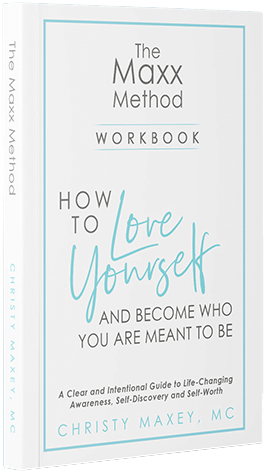If you’ve been following my blog, you may have read my “Secret to Healing Our Emotions” a lighthearted article on a serious topic that, unfortunately, carries a ton of stigma. We are often taught to avoid, deflect, and even numb our emotions in self-destructive ways.
One of the issues we face when it comes to managing our emotions, particularly the unpleasant ones, is that we approach them with no real insight or knowledge on how to address them. If you think about it, who teaches us about our emotions? The sad answer is nobody! In fact, we are often invalidated when it comes to our emotions.
No Blame, Just Understanding
As children, we are sometimes told things like “Don’t be a cry baby,” “You’re being over emotional,” “I’ll give you something to cry about,” etc. That is when we begin to deny that part of ourselves. Early on in my career in my Gestalt training, my instructor would say “we’re being taught to cut off a part of ourselves.”
When we fail to identify and accept our emotions, it is like we are cutting off our leg or arm. There is no getting around it, our emotions are a part of who we are. They are a central component of what drives us. When I feel joy or love, I behave accordingly. When I feel sad, I may decide to stay in bed and hide under the covers all day.
Our emotions are not only important in terms of our own level of happiness, but also in terms of our motivation, our behaviors, and our self-worth. It only makes sense to learn how to manage them. Finding some sort of mastery in our emotional intelligence is imperative in our psychological well-being.
The first step, as I wrote about in my blog post, is about making nice with our emotions. Quit slamming the door on them; open the door and allow your emotions to come in. Try and become friends with them. It’s called acceptance: accepting that our emotions are a part of who we are!
There is a Gestalt term the “Paradoxical Theory of Change,” which says things change once we accept them. All the kicking and screaming, avoiding, numbing, and deflecting only exacerbates the emotion. Our difficult emotions will not get better if we continue to ridicule and judge them rather than allow them to be. That’s when transformation begins.
4 Steps to Transforming Emotions:
1. Be Mindful of Them:
Increase your awareness and come to understand that the emotion exists. Label it and feel it. Be mindful of where you feel your emotion in your body (e.g. I sense my sadness in my heart. I feel my sadness as a dull ache or a lump in my throat.) Emotions reveal themselves in our bodies as sensations. If you feel a judgement or a criticism toward yourself due to an emotion, just acknowledge it and continue to focus on the sensation.
2. Accept Them
We cannot change the emotion until we come to accept the emotion without judgment. I give my clients phrases that will help them learn to acknowledge and accept their emotions, such as “I’m feeling my sadness and it’s okay.” “I’m feeling my anger and that’s my experience.”

One of the most transformational experiences I had was in my twenties working with a Gestalt therapist who asked me to say those exact words. It was a tremendous breakthrough for me to simply accept my sadness and my hurt. It was such a relief and made a lasting impact on my life. I see this over and over with clients I have worked with; the mere act of acceptance of the emotion provides relief for it. Over time—when we come to accept our emotions—we are able put some space between ourselves and those emotions, which allows us to finally heal.

3. Comfort Them:
After we accept our emotions, we can take another step towards healing by learning to comfort those unpleasant emotions. No doubt, they can sometimes bring us to our knees. We can start with breathing in comfort and breathing out judgement. To feel the sensation of the sadness in your body and then breathe in. Allow the breath to go to that sensation and then imagine that it comforts that sensation.
I was working with a male client the other day regarding his anger (an emotion he scaled at 9/10 with 10 being the most uncomfortable.) When doing this exercise, he imagined as he was breathing in comfort and wrapping a cool blue blanket around his anger.
He immediately began to smile and feel relief! He was now able to manage his own anger! Not through judgement, avoiding, deflecting, lashing out, or self-medicating, but rather managing it through mindfulness, acceptance, and self-compassion.
4. Express Them
Sometimes we no longer feel the need to express our emotions to the person we felt hurt us or angered us. We now have taken on the full responsibility and ownership of the emotion. We now see how we can manage our response as well as our emotion.
There are many ways to express our emotions. One way is to close your eyes and imagine doing something with your sadness or your anger. For example, at one time I dealt with some anger and hurt from a previous break-up. While using EMDR, I imagined some pretty horrific things (I was 10/10 on the anger) and felt immediate relief. I didn’t have to express anything to the anybody. We may find a means to express our emotions through visualization alone. We can also find a way to express our emotions through writing in a journal, letter writing, drawing, and working with a Personal Development Coach or Therapist.
Raising our Emotional IQ
Finding emotional mastery may not be rocket science, but it does require that someone guide us to approach this very important aspect of our lives. Unfortunately, these things aren’t part of our school curriculum and our parents are often ill-equipped to teach us because they were never taught these skills either.
When we work to heal out emotions, it sets off a ripple-effect. If we become aware of our emotions and work to master them as best we can, our children, partners, families, friends, and colleagues will notice this healthy emotional boundary you have set. When we improve our emotional intelligence, we improve our relationships.


